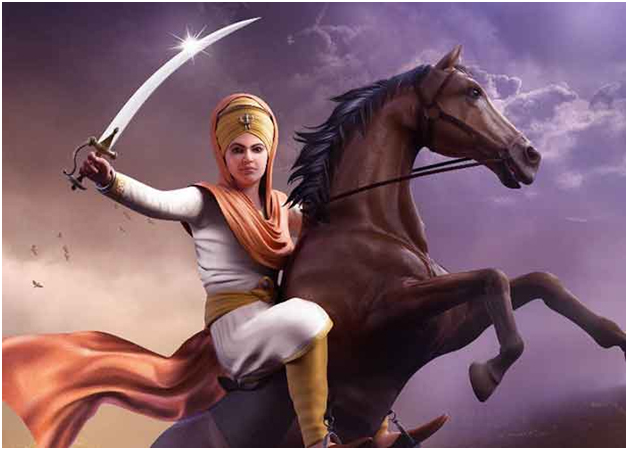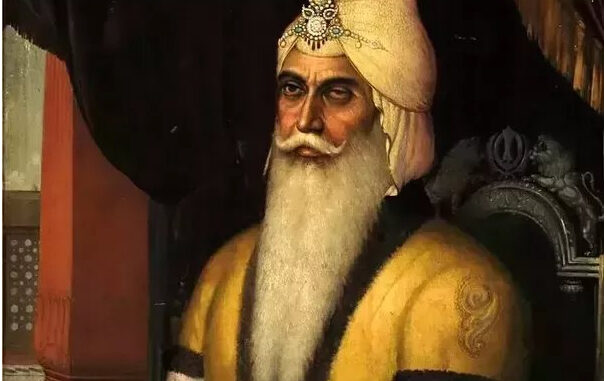30th December
1734 Mata Sahib Kaur sent a Hukamnama for Bhai Mann Singh Ji.

1922 Second meeting of Babbars at Jassowal, Dec. 20-31, to decide the reformation of the Jholichuks.
31st December
1612 Guru Hargobind left Amritsar for Delhi where he was taken into and sent to Gwalior.

1925 Haji Mohamad Maskeen offered a “Choar” for Sri Darbar Sahib.
1929 Congress Convention at Amritsar ignored by the Sikhs.
1958 Gurudwara Amendment Bill passed.
1st January
1806 Maharaja Ranjit Singh, under the advise of Kapurthala’s Sardar Fateh Singh Ahluwalia, signed a friendship treaty with the British. The signatories to this treaty were Maharaja Ranjit Singh, Fateh Singh, and Lord Lake. Under the treaty Maharaja Ranjit Singh accepted not to help Holkar and British agreed to respect territories of Lahore Darbar. Jaswant Rao Holkar left Amritsar disappointed.

1806 The Marathas and the Sikhs were the only people who offered stiff resistance to the British and the Afghans. While the Maharaja Ranjeet Singh was consolidating his powers, many political events were taking place around him. On the one hand he had to mediate a quarrel between the cheifs of Patiala and Nabha and on the other hand he had to save the face of Jawant Rao Holkar, the Maratha (Marhatta) chief, who had set his sights on whole India.
The British had clashed with the Marathas and had inflicted heavy defeats upon them. They had first taken over Delhi and Agra, defeated Scindia (a Marhatta chief), and driven out the remaining Marhatta chief Jaswant Rao Holkar.
Holkar and his Rohilla ally, Amir Khan, after having failed to obtain any support from the Malwa cheifs, moved to Amritsar. They were being followed by the British commandar, Lord Lake. He had been persuing Holkar and encamped himself on the banks of Beas. While Holkar appealed to Maharaja Ranjeet Singh for help in driving the British back, the British commander made it known to the Maharaja that doing so would extend the Anglo-Marathan hostilities to his domain (Punjab). It created a big problem for the Maharaja. The Sikh Maharaja could not afford to make his state the theatre of war between the Marhattas and the British. That is why he offered to mediate in this treaty.
The Sikh signatories guaranteed that the Holkar’s army would leave and they will have nothing to do with them. They allowed Holkar to take whatever possessions he had and recross the Sutlej without being harrased.
This was a smart political move on the part of Maharaja Ranjeet Singh. It saved his kingdom from unnecessary bloodshed. It also saved the British face. They really did not want to fight the Sikh ruler.
2nd January
1741 Sukha Singh of Mari Kambo and Mehtab Singh of Mirankot entered Harimandir Sahib, Amritsar. They were disguised as Muslims. While Sukha Singh kept guard, Mehtab Singh beheaded Massa Raangadh and escaped together. Massa Rangadh had committed the heinous crime of converting Harimandir Sahib into a dancing hall where he smoked and wined. He was the garrision commander of Madiyala. He took control of Sri Harmandir Sahib as the land was prior property of Rangadhs. Mehtab Singh was later arrested and crushed to death after unspeakable torture on wheels.
SRI DARBAR SAHIB also known as Harminder Sahib and Golden Temple was constructed by Guru Arjun in the middle of an sacred water tank (sarowar).
In sunmat 1621, with Guru Amar Das’s permission, Guru Ram Das started the digging of a tank (Taal) near villages Tugh, Gumtala, and Sultanwind. This digging was completed by Guru Arjun Dev in sunmat 1645 and named “Santoksar”.
Simultaneously, with Guru Amar Das’s permission, a village was established nearby and named “Guru Ka Chaak”. Guru Sahib’s residence in this village were popularly known as “Guru Kae Mahal”. To the west of these residences, next to the tree known as “DukhBhanjani Baeri”, the digging of a tank was started in 1634. However, this digging remained incomplete and was eventually completed by Guru Arjun Dev after he ascended to the Gur Gadhi. Guru Arjun Dev vigorously pushed all of the projects initiated by Guru Ram Das. He invited business people, scholars, and skilled people from all over, to come and settle around this area and establish new markets. As a result this area came to known as “Ramdas Pur”. Bhai Sallo is especially noted for his hard work in establishing and populating this area. His contributions are extremely noteworthy.
In sunmat 1643, the construction of permanent sarowar began and its name changed to “Amritsar”. As a result the surrounding city also adopted the “Amritsar” name. On magh 1, sunmat 1645, Guru Arjun Dev Patshah asked Sain Mian Meer to lay the foundation stone of Harminder Sahib. The foundation stone was laid right in the middle of the sarowar and upon completion of its construction, Sri Guru Granth Sahib’s prakash was established in sunmat 1661.
3rd January
 1961 Master Tara Singh was released from jail, where he was confined in connection with Punjabi Suba agitation. Master Tara Singh was born on 24 June, 1885, in Haryal in Rawalpindi district of North Western Province of undivided India. His mother, Moolan Devi, was a pious lady and his father, Bakshi Gopi Chand, was a patwari of the village and was a well known and respected person. Tara Singh’s original name was Nanak Chand. In 1902 Nanak Chand embraced Sikhism and came to be called Tara Singh.
1961 Master Tara Singh was released from jail, where he was confined in connection with Punjabi Suba agitation. Master Tara Singh was born on 24 June, 1885, in Haryal in Rawalpindi district of North Western Province of undivided India. His mother, Moolan Devi, was a pious lady and his father, Bakshi Gopi Chand, was a patwari of the village and was a well known and respected person. Tara Singh’s original name was Nanak Chand. In 1902 Nanak Chand embraced Sikhism and came to be called Tara Singh.
4th January
1909 Baba Ratta Singh Ji Nirankari passed away. Barsi celebrations are observed every year.
NIRANKARI: a particular branch of GurSikh faith, established by Bhai Dayal Singh Ji. A Saehajdhari Sikh resident of Peshwar, GurSahai Ji, had a son named RamSahai Ji who married Ladhaki, daughter of Vasakha Singh (treasurer for the tenth Guru). Bhai Dayal Singh was born from this marriage on 15 Vaisakh sunmat 1840 (1783).
5th January
Prakash Utsav (birthday), Tenth Patshah, Guru Gobind Singh Ji.




Be the first to comment